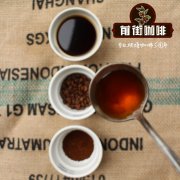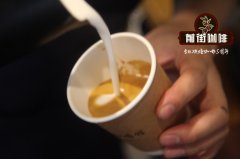What is the flavor of bourbon varieties of Mayogi cooperative in Gicumbi coffee producing area of Rwanda? Mayogi cooperation

Professional coffee knowledge exchange more coffee bean information please follow the coffee workshop (Wechat official account cafe_style)
What is the flavor of bourbon varieties of Mayogi cooperative in Gicumbi coffee producing area of Rwanda? Introduction to the story of the Mayogi Cooperative in Rwanda?
The Mayogi cooperative is made up of a group of 108 farmers. Due to lack of understanding of coffee processing, cooperatives rented processing units to private owners. In 2012, Mayogi became one of the winners of the Excellence Cup. In 2017, cooperatives began working with NGO Sustainable Harvest, and since then, farmers have regained their processing units, and now, with the support of the Sustainable Harvest project, they are managing their coffee cleaning stations. The Mayogi laundry station, which began in 2010, is located in the Gicumbi district of the eastern province. Coffee is grown in this area at an altitude of 1500-1700 meters. The station received its name because it was surrounded by five mountains, which means Mayogi. In 2010, they formed 590 members with the help of Technoserve. Technoserve brings Mayogi to RTC. RTC is able to finance Mayogi's construction and equipment, as well as operating funds. The Mayogi cooperative now has 321 members. Mayogi supplied 4000 kg of parchment to RTC in 2010 and 14600 kg of parchment in 2011. The coffee comes from the Nova Coffee laundry station in the Gicumbi district of northern Rwanda.
The treatment plant used to operate as part of the cooperative, but there was little investment in laundry stations or cooperatives themselves to improve quality and capacity. But Agnes Mukamushinja saw the potential of the laundry station and bought it with her husband in 2013, renaming it Nova Coffee. She invested in the operation of the wet mill using new pulping machines, new fermentors, sorting and floating areas, new drying beds and better parchment warehouses. Many small farms in the surrounding communities have also invested. These farms are usually small and run by families. There are some coffee trees on a small amount of land. They take care of the trees and pick their own cherries.
Farmers can send their coffee cherries to any processing plant they choose, and the competition for cherries is very difficult. Anges and her team at Nova strive to establish and maintain relationships with farmers around the plant and provide competitive prices. Their investment in surrounding farms and communities also helps to build good relationships.
Nova also provides medical insurance (Mituelle de Sante) for 50 families and organizes football and bicycle competitions for the community. They also reward farmers who provide the best quality and best classified crops each season.
Farmers deliver cherries in the reception area of the processing plant, where they are checked to ensure that farmers select and classify them correctly. If further classification is needed, farmers will be required to do so, then weigh it and continue pulping.
Put the cherries into the jar before pulping and use a simple technique to remove & # 39; floats: overripe and undeveloped cherries rise to the surface of the pot and ripe and green cherries dense and sink. Unripe or overripe processed separately and sold as low-grade coffee.
The coffee is pulped from here and then fermented. Rwanda has a relatively cool climate during most of the harvest season, which helps to control the fermentation process. After that, the parchment is graded and washed in the channel, divided into two grades based on density, and then soaked in clean water in the jar for up to 16 hours.
The parchment was initially taken to the shadow pre-drying table, while the parchment was still wet, and the other round of sorting was done by hand, because it was easier to find defects. Parchment is dried on African drying beds for up to 15 days, covered with a sunshade in the strong noon sun of Rwanda, or protected from moisture on rainy days and at night.
After drying, put it in a bag and transport it to the outlet.
CWS works with Sustainable Harvest to develop good agricultural practices for farmers and to link them to the services of the World Bank. At present, the cooperative has grown and is composed of 267 people, of whom 172 are women and are able to pay loans effectively.
With the increase of coffee knowledge, the cooperative won the excellent Cup in 2018, ranking second.
In the future, the cooperation plans to double the number of washing stations and production, and the cooperative, registered in 2010, is located in the north-eastern corner of the northern province of Rwanda. The cooperative is made up of 381 farmers, often Gicumbi Mountain, which is ideal for blooming and fruiting and can produce high-yielding trees.
The cooperative now owns a wet mill that produces well-sorted, fully washed coffee. Mayogi Coffee in August 2018 won the Presidential Award and won first place with a cupping score of 90.06. Rwanda recognized the best coffee: Rwanda celebrates 10 years of recognition of coffee farmers, and Rwanda's quality coffee was presented at the colorful Cup Excellence Award ceremony on Friday.
28 of the 344 cafes that have signed up for the competition announced the winners of the 2018 Cup of Excellence Award after more than 86.62 points.
The top three scored more than 90 points, so they became the winners of the Presidential Award. These are: Twumba coffee from Karongi District, Western Province (90.53), Mayogi Coopertative from Gicumbi, Northern Province (90.06), and Murundo Coffee washing Station from Nyamasheke, Western Province (90.03).
The winning coffee is selected through rigorous competitions held by selected national and international cup groups, and there are at least five different times during the competition.
The best coffee is auctioned after the award ceremony and is guaranteed by the highest bidder. For example, the first winner of the previous competition sold it at $84 per kilogram. The best coffee of the year will be auctioned next month.
The Excellence Award ceremony is organized by the Government of Rwanda in cooperation with the Coffee Excellence Alliance to recognize and reward individual farmers who have worked hard to produce unique flavor Rwandan coffee.
Since launching the Excellence Cup in Rwanda in 2008, the award-winning coffee has attracted buyers from Asia, Europe and the United States. The excellent Cup also promotes links between Rwandan coffee farmers and buyers who like high-quality coffee, and is willing to pay a high price for it.
Production area: Gicumbi
Altitude: 1785 m
Type of coffee: bourbon
Soil type: volcanic soil
Treatment: natural sunlight
Water source: mountain natural spring water.
Flavor: peach iced tea with medium acidity
Important Notice :
前街咖啡 FrontStreet Coffee has moved to new addredd:
FrontStreet Coffee Address: 315,Donghua East Road,GuangZhou
Tel:020 38364473
- Prev

First place in 2018 Rwanda COE Excellence Cup | Rwanda Twumba Gitabura Cell Nyaruya
Professional coffee knowledge exchange more coffee bean information please follow the coffee workshop (Wechat official account cafe_style) 2018 Rwanda COE Excellence Cup No. 1 | Rwanda Twumba Gitabura Cell Nyaruyaga village coffee flavor and taste? The Twumba coffee washing station is located in the village of Nyaruyaga in Gitabura Cell, Twumba District, Karongi District, West Province of Rwanda. The place
- Next

What is fancy coffee? what are the characteristics of fancy coffee with several flavors?
Professional coffee knowledge exchange more coffee bean information Please pay attention to the coffee workshop (Wechat official account cafe_style) although it is only a real exotic product, coffee has surpassed tea and become an indispensable drink for office workers. There are so many kinds of coffee that people can't help but classify themselves in line. In this queue, the familiar Nestl é and Starbucks do not calculate
Related
- Detailed explanation of Jadeite planting Land in Panamanian Jadeite Manor introduction to the grading system of Jadeite competitive bidding, Red bid, Green bid and Rose Summer
- Story of Coffee planting in Brenka region of Costa Rica Stonehenge Manor anaerobic heavy honey treatment of flavor mouth
- What's on the barrel of Blue Mountain Coffee beans?
- Can American coffee also pull flowers? How to use hot American style to pull out a good-looking pattern?
- Can you make a cold extract with coffee beans? What is the right proportion for cold-extracted coffee formula?
- Indonesian PWN Gold Mandrine Coffee Origin Features Flavor How to Chong? Mandolin coffee is American.
- A brief introduction to the flavor characteristics of Brazilian yellow bourbon coffee beans
- What is the effect of different water quality on the flavor of cold-extracted coffee? What kind of water is best for brewing coffee?
- Why do you think of Rose Summer whenever you mention Panamanian coffee?
- Introduction to the characteristics of authentic blue mountain coffee bean producing areas? What is the CIB Coffee Authority in Jamaica?

